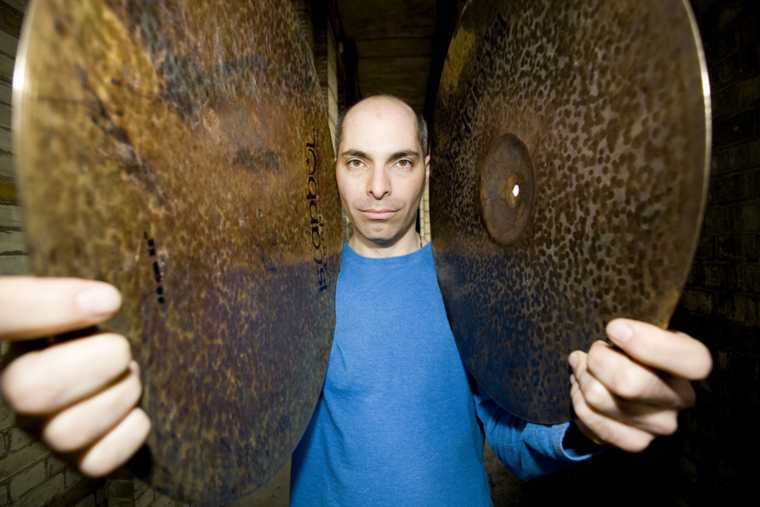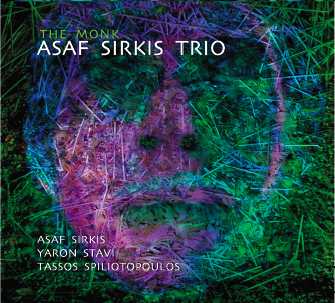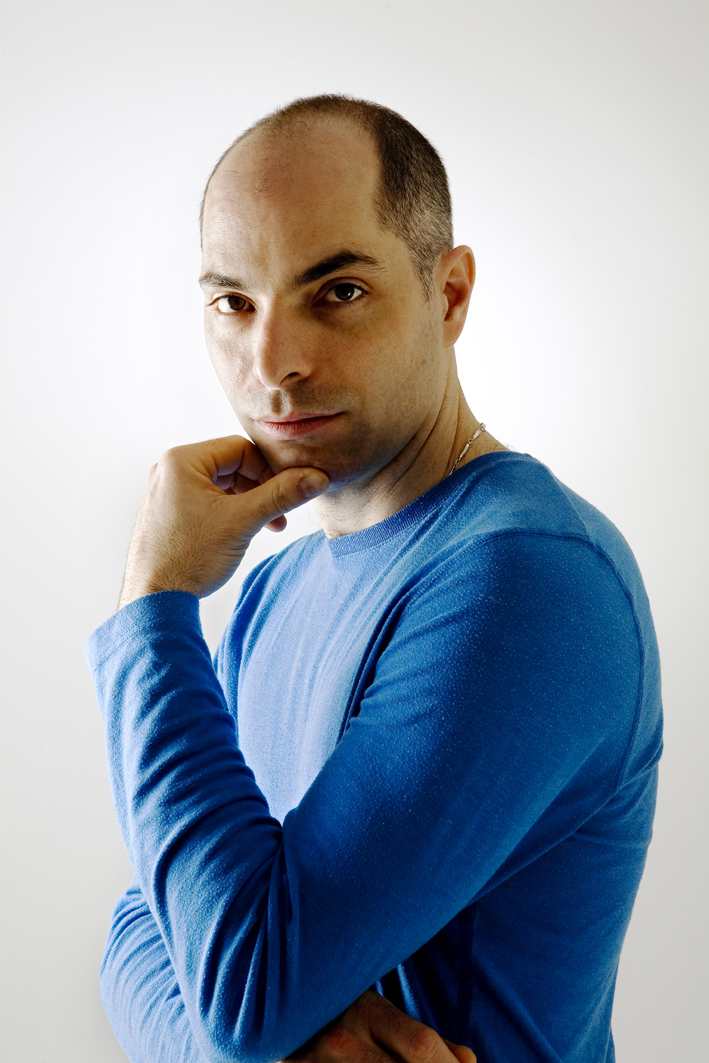
LATEAUTUMN2008

The Monk
Asaf Sirkis Trio
Sam Productions
Release date: 14.09.2008
Launch gig: 18.09.2008 at Charlie Wrights, London

Asaf Sirkis – Drums
Yaron Stavi – Bass
Tassos Spiliotopoulos - Guitar
Special Guests:
Gary Husband – Keyboards
Adriano Adewale – Percussion
The Monk is the latest musical installment from the drummer and composer Asaf Sirkis, and is one of the finest that he has put together so far. The influence of the earlier Inner Noise albums (“The Song Within” and “We are Falling”) is noticeable in the static harmonic quality, which has a strong resemblance to the music of Oliver Messiaen. The archaic and devotional sound of the church organ is not present this time, but we can hear the hypnotic repetition of melodic figures that are evocative of the “Inner Noise” project. The drums integrate into the musical texture, constantly shifting and creating layers of counter rhythms, producing relentless forward movement which is very invigorating. The line up on this album is made up of the newly formed trio including Tassos Spiliotopoulos (guitar), Yaron Stavi (bass) and special guests Gary Husband (keyboards) and Adriano Adewale (percussion).
The first track, “Stoned Bird” begins with alternating, repeated, ostinato figures, which are used to create an insistent harmonic backdrop. The open intervals and harmonics played on the higher strings of the guitar sound harmonically neutral, lacking in forward harmonic movement, which creates a very oriental, eastern, mood. It is static, on the one hand, but on the other there is such a lot happening and the pace is relentless. The beauty of the piece is the way the repeated ostinato metamorphoses into something new, as some notes shift. A new colour is slowly uncovered, like a veil being drawn away from a picture. The rising motive fades, creating a sense of movement away, like terrestrial bodies passing each other at a distance. At the end of the track, the music transforms into melodic pointillism, which reminds one of looking at the stars in the night sky. The music of the cosmos continues in the second track: “The Monk,” with a chromatic section and also the dreamy melodic material that pervades a lot of the album. Sirkis mentioned in an interview something that is apparent in his music: “music for me offers an opportunity, a legitimate opportunity to be nobody, to be nothing, and to forget about everything I learned and to forget about who I am.” In his music, we are drawn into this wealth of musical activity and expression, but there is also a timeless existential quality to it.
There are different sides to Sirkis which is apparent in subsequent tracks: the little piano ballad called “the bridge” played by Gary Husband and the fourth piece “Without a Story”. In the first, you see Sirkis as the classical composer, and in the latter, rock influences are more apparent. Improvisation is a priority and he gives the players the freedom to explore the timbral resources of their instrument. “Without a Story” is an obvious example, as Spiliotopoulos is able to combine his bell like clarity of tone with a great deal of experimentation such as looped distortion and overdrive effects, making improvisation appear to be totally effortless. The effect is to produce another rhythmical plane from the simulation of acoustic beats, as two oscillating notes approach the same pitch and sympathetically merge together.
Drumming and rhythm is omnipresent in this music, bringing a restless energy to the music. Sirkus is a master at pushing his dynamic range to the extreme, combining this with a lot of timbral shading, which gives the music a phenomenal rhythmical depth. The drum solo is wonderfully evocative of the gestures of dance. In “Alone,” Adriano Adewale contributes further to the rich palette of timbral colours, as there are a lot of interacting percussion sounds such as rattles, gongs, cans and bells. At the end of the piece the music fades out and disappears into nothing, creating a perfect setting for the next piece: The “End of the Circle,” which is a very beautiful haunting guitar melody, suspending time and giving this cyclical quality that is evoked by the title.
In total contrast, the rhythmical ostinato effect is at its best in “Dream” and it carries the listener along, as one is easily intoxicated by repetition. The reshaping of the insistent melodic line is totally hypnotic as it pushes and pulls against the counter melodies and rhythms. The listener is suddenly surprised by an electronic organ passage played by Gary Husband, almost like Messiaen inspired bird song. One can imagine that the music enters this fascinating dislocation of the world of dreams, in which we consolidate distant but related memories. The intensity of this track is build up in the drum solo and it ends in a flurry of rhythmical intensity as Yaron Stavi’s persistent base brings the music to an abrupt climax. The penultimate piece from this album, “The Journey Home,” carries us back to where we started: chromatic harmonics fading in and out, a meandering melodic line with an ethereal quality to it and a sense that time no longer exists. The music fades outs beautifully, ending without a climax or cadence.
The monk is an album which has a seamless continuity to it, as each movement complements the other parts. Each piece is quite clearly differentiated from the others, but forms an identity as part of a unified whole. It is quite an achievement to combine elements of classical composition, rock music in a jazz context, while at the same time keeping a strong sense of a unique musical identity, which is something that I feel that project has certainly achieved.
For further information on this upcoming release visit: http://www.asafsirkis.co.uk/
Review
By Rory Braddell, August 2008; photos Matt Crossick
